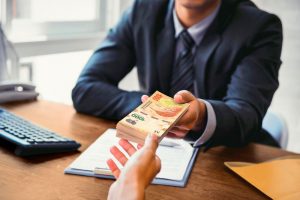
Legal framework of safety and hygiene in the field of construction.
In a work there are numerous precautions that must be taken into account to prevent accidents and injuries.
Security policies are key to minimize the risks of accidents, since they favor a more controlled work environment, in which the conditions for an accident to occur are kept under control.
In turn, hygiene policies ensure the correct use of personal protection elements, the adequate treatment of materials, and other points that prevent the appearance of diseases or injuries derived from the incorrect manipulation of tools and substances.
As a whole, health and safety policies seek to prevent all types of damage to personnel who work and / or circulate in a given work environment.
The general legal framework of these policies is the National Law of Safety and Hygiene in the Work Nr 19.587, sanctioned in 1972. The decree 351/79 is the main regulation of this law, and still remains with some modifications for the generality of the activities.
In construction, for its part, there is Regulatory Decree 911/96, which deals with establishing specific rules for this area. But other regulations are also relevant, such as SRT Resolutions Nr. 231/96; 051/97; 035/98 and 319/99, which as a whole indicate the essential safety and hygiene conditions that must be met in a work context. You can also see the Convention on safety and health in construction signed with the ILO in 1988.
The control organisms that can verify the correct implementation of these policies are, in the Province of Buenos Aires, the Superintendence of Work Risks (SRT); the Ministry of Labor of the Province of Buenos Aires; the ART, and the UOCRA.
The hygiene and safety plan
Hygiene and safety policies should be delineated by a trained professional in the field. At the beginning of a project, the specific risks for each stage and the most problematic areas are identified. Then, an action plan is drawn up that includes preventive, corrective security measures and the corresponding controls.
This plan results in a Technical File. Decree 911/96, in its Article 20, specifies:
“The Technical File will be constituted by the documentation generated by the Hygiene and Safety Supply for the effective control of the emergent risks in the development of the work. It will contain sufficient information, according to the characteristics, volume and conditions under which the works will be developed, to determine the most significant risks in each stage of the same. In addition, it must be updated by incorporating the modifications that are introduced in the programming of the tasks that mean alterations in the level or characteristics of the risks for the safety of the personnel. It shall be in charge of the Hygiene and Safety Manager and shall be exhibited to the competent authority, at his request. The Hygiene and Safety plan is implemented in the field, together with training in the correct use of tools and materials, as well as other safe work procedures.”
It usually contemplates different elements of personal and collective security, some of those are:
- Personal protection elements (helmets, gloves, glasses, etc.)
- Protection of electrical panels.
- Suitable signaling and fencing systems.
- Adequate circulation conditions in common spaces, passage and collection of materials.
- Fire extinguishers and fire protection.
- Prevention measures against falling people and objects.
- Order and cleaning in the work area.
- Organized storage and storage of materials.
- Adequate temperature, lighting and ventilation conditions.
- Access to toilets and changing rooms for construction personnel.
- Drinking water for personnel use and consumption.
- Adequate management of construction, sewage and organic waste.
- Work risk insurance for staff and third parties.
- Technical file, training and advice on work on Hygiene and Safety.
The most used personal protection elements in the construction include safety helmet; gloves, earmuffs, goggles, chinstrap, security shoes, chest and / or welder’s apron
Of course, each plan will have its particularities according to the type of work and the characteristics of the site. In this sense, the legislation is general and the professionals in charge must deal with adapting it to each case.
As established by Decree 911/96, the responsibilities for breach of the plan fall jointly on the hygiene and safety at work professional, the construction manager, the construction company and the owner.







